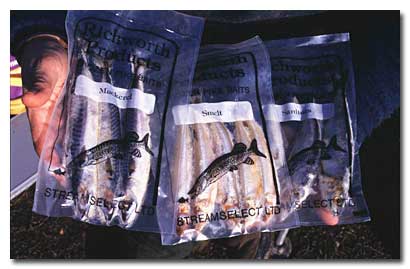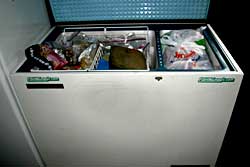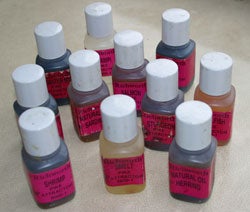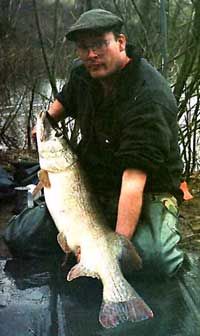It’s worth investing in a second-hand freezer, so you’ve got the room to buy in bulk. You sometimes see good bargains in supermarkets and can save a packet over the course of a season if you’ve got enough freezer space to take advantage of them.
Separate and bag ’em Baits which have partially-thawed in transit need separating and bagging down in smaller quantities. They’re not much use frozen in a great big lump, which is what can happen if you just sling a big bag of fish in the freezer and forget about them.The trick is to get as much air as you can out of the bag and seal it – one way of doing this is to use a bag slightly wider than the length of the bait and roll it around each one before you put the next one in, which should both separate them and get most of the air out. Shop-bought baits, which come vacuum-packed, keep best of all – as long as the bag is intact. Having used Lucebaits for years, I can vouch for their freshness and quality. Take banker baits and a few exotics I usually take a range of banker baits, along with a few more exotic ones. Mackerel, either half or whole, sardines and smelts seem to work just about anywhere.
You could try a flavour Sardines and herrings are good for “oiling” up. Buy them fresh from the supermarket or a fishmonger and inject them with your chosen flavouring before freezing.Be generous with fresh baits and inject the oil into the body cavity, where it will be trapped as the bait freezes. In really cold weather, jab a couple of holes in the bait with a needle before casting, to help the oil escape. It’s worth doing this on both sides, so whichever way the bait settles on the bottom there are holes on top and the oil can actually get out. You can also inject just about any other bait with one of the wide range of flavours available once it has thawed enough to stick a needle in. One of the best flavours I’ve found is Richworth’s mackerel oil – unlike a lot of flavours on the market, it actually smells fishy and is quite concentrated – so a few mls injected into a bait produces quite a slick. So does the fishy cooking oil sold in some big supermarkets in the Thai/Chinese section and the mate who discovered this one had two good twenties on a fairly pressured stretch of river the first few times he tried it.
One thing to beware of is some coarse deads float until they have thawed, which can cause problems with some float rigs. Fresh is best but ‘off’ baits sometimes work Using the coolbox means you can take any un-used bait home and re-freeze it for your next session. I try and use these “second hand” baits first next time I go out, so I don’t end up with a load of bait which has been half thawed then re-frozen half a dozen times. One thing I have found is that “off” baits do sometimes work. I wonder if pike on heavily-fished waters learn to avoid the volley of fresh bait which comes flying their way all weekend, but feed happily on discarded baits they find lying in the margins. My favourite rig for most winter deadbaiting is the pencil float. It’s super sensitive and I find watching the floats far more interesting than staring at a pile of rods on buzzers. The poppernoster rig can be a killer on weedier waters, or those where the fish respond to twitched baits. Whatever you use good bite indication and prompt striking are essential. |
Welcome!Log into your account














